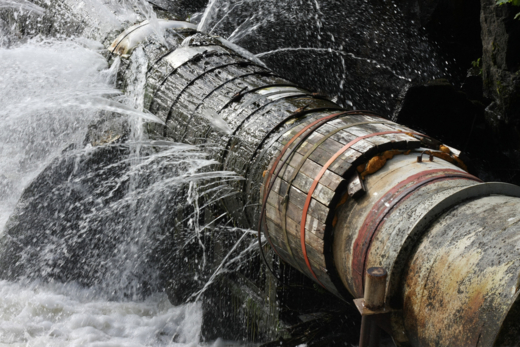
Sales pipeline management: how to fix leakage
A big headache for sales managers and sales directors are pipelines full of opportunities that stall and don’t materialize, also known as leaky pipelines. This leads to inaccurate sales forecasts, missed targets and embarrassing moments with senior leadership. The reasons behind stale and leaky pipelines can be plentiful. And, without a structured sales process and focused coaching, the problem may never go away.

Many moving targets create complexity
In complex sales environments, where sales projects involve multiple stakeholders and longer sales cycles, it’s a challenge to keep track of all the moving targets. An average B2B sales project will involve five stakeholders with various ambitions, numerous decision and qualification criteria, tollgates, deadlines and financial aspects. Combine this with an increasingly complex competitive landscape and it becomes clear why successfully navigating through complex sales opportunities is far from easy.
Crap in, crap out – qualify well
All too often, sales teams have a loose definition of what qualifies as a sales opportunity. This leads to a pipeline full of “opportunities” with companies that do not align with the profitable customer profile. Also, deals are often pushed along in CRM system’s pipelines based on the subjective feeling of the individual sales person. With a pair of ”happy ears” and a lack of clear milestones and qualification criteria, the pipeline can quickly become bloated and lead to incorrect forecasts.
Example question to ask (the sales person):- “What could prevent us from making this customer happy?”
- “Will this become a profitable customer for our company?”
If the prospective client is too small, the reply indicating this may be “as they only have X employees, they won’t get as much value out of the solution as most other customers…”. Determine if it’s worth your sales person’s time to pursue. If not, reallocate the time to other sales projects.
Once a deal is in the pipeline, ensure momentum
There’s only so much time available in any given week. In a moderate complex sales environment, each sales person may have around 20 sales opportunities active at any given time, all in different phases of the pipeline. Ensuring that these are well qualified is paramount because each sales project in the pipeline will swallow time and resources. Once the decision has been made to go after an opportunity, momentum must be maintained and all the crucial moving parameters determined quickly. Each opportunity needs to be continually qualified as changes, either from the buyers side or ours, can require an increase of resources or even force us to walk away. When things start to slip, its important to react quickly.
Example question:
- “This deal has not had progress for three weeks, what is the hold-up?”
One example might be that there’s been a change of stakeholders “our ambassador in the account quit”. The deal may need to be taken out of the pipeline altogether and a new effort initiated from scratch at another time, depending on the status on the buyers side.
Do you really know what’s in it for the customer?
Time and again, sales people are too focused on the sale and therefore fail to figure out the business objectives, decision criteria and motivational factors of the buyer. Make sure you always know why the buyer is looking to make changes and how your solution is the best possible fit.
Example questions:
- “What makes them want to change and why now?”
- “What happens if they do nothing?
- “Who will be affected by the change and are we talking to all the stakeholders?”
If we don’t have clear responses to the above, we’re in deep waters and quickly need to engage with the buyer to find out.
Rescue a stalled pipeline by not allowing it to materialize
In conclusion: the best way to rescue a stalled sales pipeline is by being proactive and not allowing it to materialize in the first place. There is no quick fix.
Do it right and start with the basics: a well thought out sales process that captures the buyers’ key information, their buying journey and decision criteria. You need to create a sales pipeline cockpit, where you have a complete overview of everything that is going on and can ensure your team is on track. Thus, allowing you to provide the necessary resources and assistance to stay ahead of your competitors.
Ensure pipeline momentum with sales technology and coaching
In order to improve pipeline momentum, win-rates and forecast accuracy; your best practices need to become engrained in your sales culture. To do this, make sure you are using the best-of-breed sales tools in your daily operations. This will minimize micro-management and allow the coaching experience to be more qualitative for both the sales person and manager alike.

By George Brontén
George is the founder & CEO of Membrain, the Sales Enablement CRM that makes it easy to execute your sales strategy. A life-long entrepreneur with 20 years of experience in the software space and a passion for sales and marketing. With the life motto "Don't settle for mainstream", he is always looking for new ways to achieve improved business results using innovative software, skills, and processes. George is also the author of the book Stop Killing Deals and the host of the Stop Killing Deals webinar and podcast series.
Find out more about George Brontén on LinkedIn









